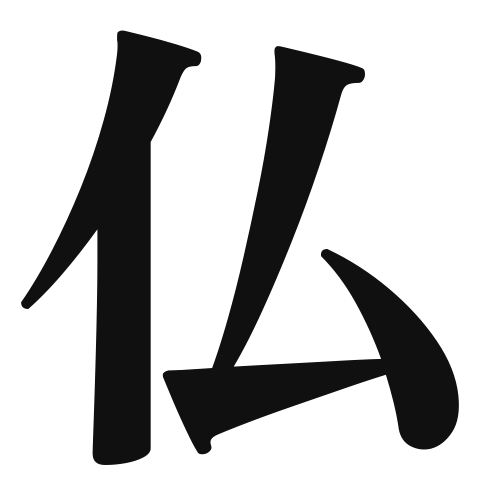1. Overview of Meaning
The kanji “仏” (butsu) primarily means “Buddha” or “Buddhism.” It represents the concept of enlightenment and is often associated with the teachings of Siddhartha Gautama, the founder of Buddhism.
2. Formation and Radical
Formation of the Kanji: The kanji “仏” is a phonetic-ideographic character (形声文字). It combines the radical for “person” (亻) on the left, indicating a human aspect, with the phonetic component “佛” (butsu), which provides the sound.
Radical: The radical of “仏” is 亻, which is related to people or human beings.
3. Examples of Usage
Common Words and Phrases:
- 仏教 (bukkyo) – Buddhism
- 仏像 (butsuzo) – Buddha statue
Example Sentences in Daily Conversation:
- 彼は仏教に興味があります。 (Kare wa bukkyo ni kyomi ga arimasu.) – He is interested in Buddhism.
- この寺には美しい仏像があります。 (Kono tera ni wa utsukushii butsuzo ga arimasu.) – This temple has a beautiful Buddha statue.
4. Synonyms and Antonyms
Similar Kanji:
- 神 (shin) – God; while both refer to spiritual beings, “神” is more associated with deities in Shinto and other religions.
Antonyms:
- 悪 (aku) – Evil; this kanji represents the opposite of the enlightenment and goodness associated with “仏.”
5. Cultural and Historical Background
Relation to Japanese Culture: The concept of “仏” is deeply embedded in Japanese culture, influencing art, architecture, and philosophy. Temples and shrines dedicated to Buddha are common throughout Japan.
Proverbs and Idioms:
- 仏の顔も三度まで (Butsu no kao mo sando made) – “Even a Buddha’s face can only be shown three times,” meaning that even the most patient person has limits.
